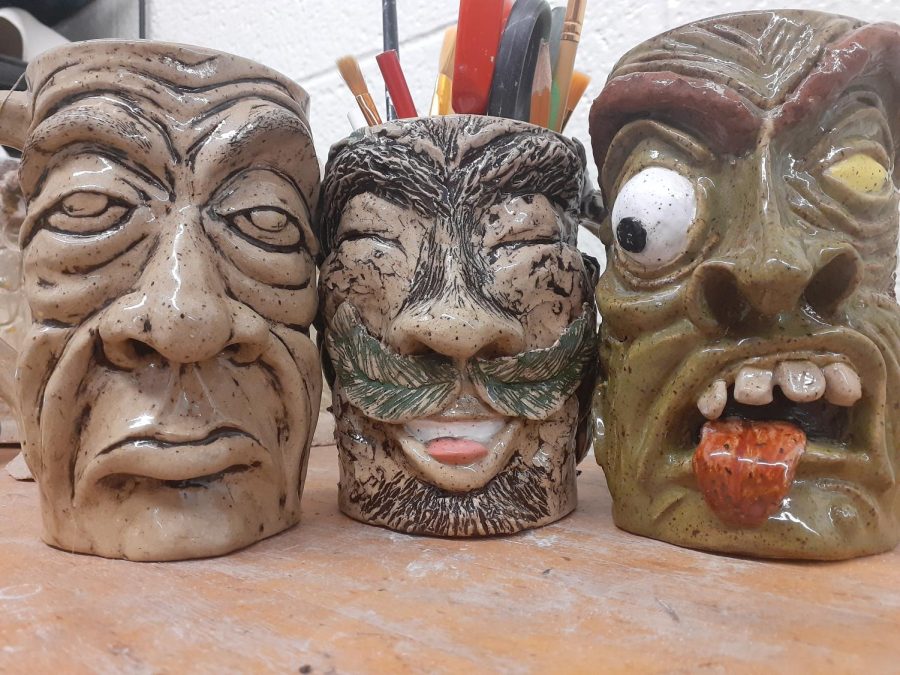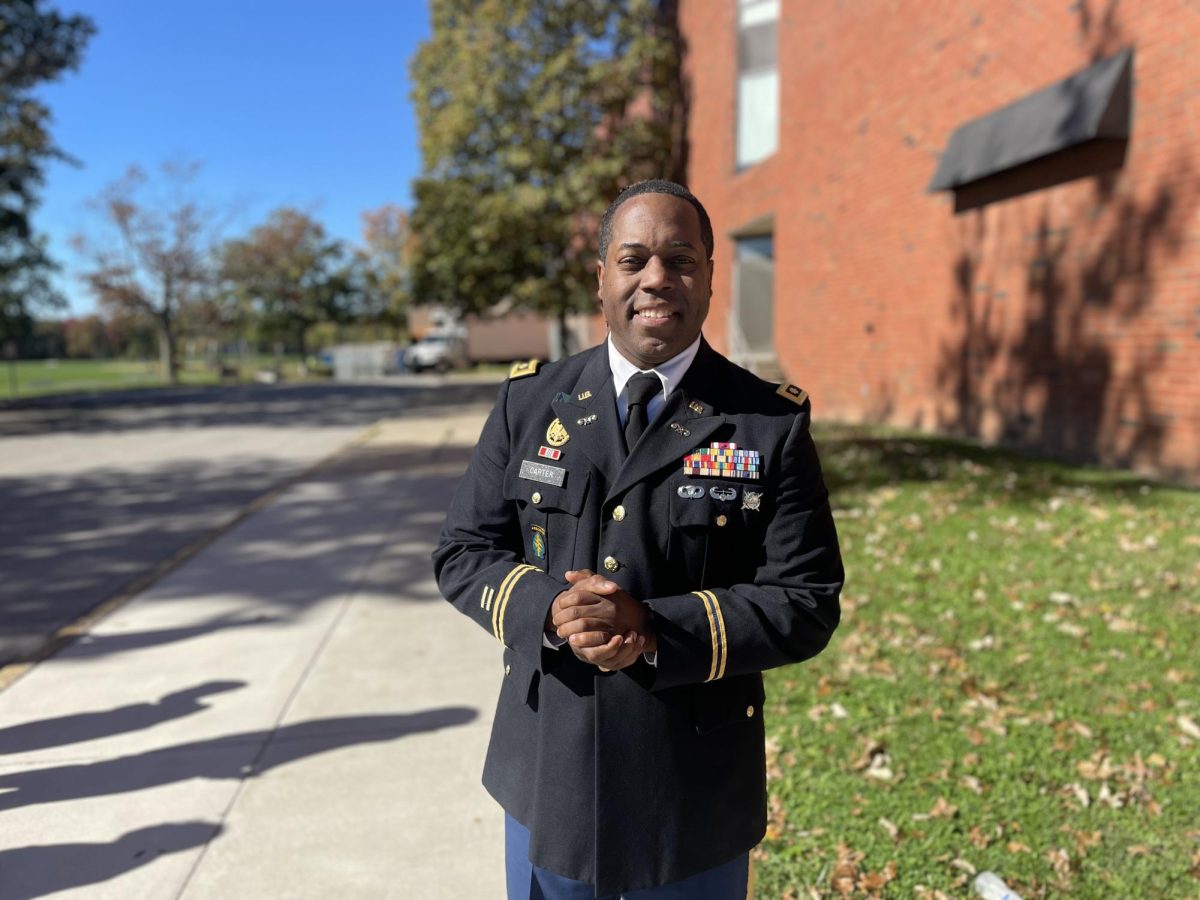The Student Becomes the Teacher in Annual Ceramics ‘Spread the Mud’ Event
June 2, 2023
From May 17th to May 19th, the ceramics studio opened up for its yearly “Spread The Mud” event. There are people in NAHS who have never even seen the ceramics room before, completely oblivious to what exactly goes on inside.
“Sometimes people are kind of intimidated to come in,” said ceramics teacher Jessica Kirker. “So we want to invite people in with guidance and a buddy to see if they can create something.”
This event aims to get more people in the ceramics room to see what goes on and how these finished pieces are created. It brings in a bit more appreciation to art that’s seen throughout life, which is the beauty of it.
“You can look at a bowl out in the art show and have no idea what that means,” said Kirker. “But when you make a bowl, you can look at a bowl in the art show and be like, ‘Wow, I know how good that is.’”
“Spread The Mud” is not only limited to students teaching other students, as the event gives those students who take ceramics an opportunity to teach their favorite teachers something new as well.
Earlier in the year, senior Kamiah Pugh faced plenty of challenges on the ceramics wheel, but after overcoming those struggles, she’s been able to share that experience with people who are new to the medium. Pugh has been a scholar throughout the course of the event, teaching 6 people, including school board member Sharon Mauch, how to create a bowl on the wheel.
“My teacher, [Kamiah], was an excellent teacher,” said Mauch. “She calmly and patiently showed me how to center the clay and didn’t get frustrated when it took me a little longer to pick it up.”
In the teacher position, Pugh also works through an even larger challenge.
“I’m teaching everybody with one try,” Pugh said. “Everybody’s got a bowl with one try. We didn’t have multiple tries so it was really cool teaching people in that type of way.”
English teacher Jill Myers also participated in this event, being taught sophomore Eduardo Anaya-Aguilar. Throughout the process, Anaya-Aguilar had been completely judge-free and patient with Myers, creating that comfortable student-teacher bond while also teaching a lesson through clay.
“I learn so much from my students every day,” said Myers. “Being a teacher is a two-way street. We are also constantly learning and that’s what makes it such a rewarding profession.”
Math teacher Michael Young often takes part in this event, being assisted by former students. Even without being deemed an “artist” or art teacher, he was still able to develop a deeper understanding and appreciation for ceramics and art as a whole throughout his time in the ceramics studio.
“Having had the experience of working with it, I see how much more involved the process is,” said Young. “It really takes some serious skill and technique and experience in what you have is required to be good at that.”
Taking ceramics can be an incredibly rewarding experience. Not only do you have the opportunity to learn a new skill and express your creativity, but you also get to work with your hands and take a break from the traditional pencil and paper.
A lot of students often have misconceptions about their artistic ability based on how “good” they can draw. When it comes to creating art, drawing is typically the first thing we learn to do. People tend to quit their art careers and even put a hold on challenging themselves to new experiences since they don’t believe they’re an artist if they struggle with drawing.
Our ceramics class here at NAHS opens a new world of art for younger aspiring artists. It’s literally a hands-on medium. When you draw, you’re drawing onto a piece of paper through a tool. However, with ceramics, your hands are the tool. The handle you create for your cup feels like your hand when you drink out of that cup, as opposed to being physically disconnected through a paintbrush.
“Yes, you control that paintbrush,” said ceramics teacher Jessica Kirker. “But with clay, your physical touch is in the piece that you make.”
Because the art of ceramics is very tactile, it has soothing components since you’re not detached from it. The clay is squishy, you can slam it, and that can be satisfying for a lot of people. It responds immediately to what is done to it, and if any mistakes are made, you can smash it and smooth it back. It’s a forgiving medium, which appeals to a lot of students, but without even trying it, you wouldn’t know that it appeals to you.
With clay, there’s a lot of physical strength and a lot more engagement put into it. When doing as something as simple as rolling out a big slab of clay or leaning over to center it on the wheel, your whole upper body is working.
“You can’t sit still in the ceramics room,” said Kirker. “Some students need that chance to be constantly mobile when they create and it works better for them.”
Even though there is constant movement throughout the class, students still have the option to sit and relax. Junior Christiana Fritz, currently taking Ceramics II, prefers sitting and sculpting rather than being on the wheel. Some students may find it easier to have a lot more control with sculpting and building since everything is a lot more in your hands, making things easier to change and work with. On the wheel, if a mistake is made, you normally have to restart completely.
During her time in this course, Fritz has learned not only how ceramics and its machinery and processes work, but she was also taught that it’s a big part of some people’s lives. That’s what builds an appreciation for the craft.
“Some people, it’s their livelihood,” said Fritz. “Making products for people, that’s what they do.”
As the doors of the ceramics studio begin to close, Kirker prepares for her next batch of ceramists for the 2023-2024 school year with new glazes to purchase, more tools to order, and even more mud to spread.
Editor’s Note: Ashiah Shamsid-Deen is a student in Dr. Kirker’s Ceramics II class.



